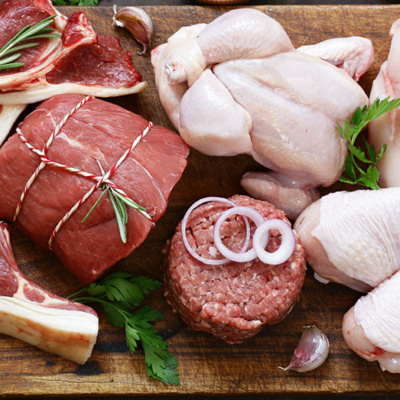top of mind news
- Cleaning Post Covid: Is Your Operation Prepared To Re-Open?
- Restaurant Sales are Improving, but it’s a Complicated Landscape
- Business Interruption Claim Denied? Here are a Few Ways to Fight Back
Poultry
 For the week ending April 25th, total chicken slaughter rebounded from the week prior, but dipped 1.3% below year ago levels. Estimates for last week’s broiler production was a 0.3% decline year over year. While the output has been less severe across RTC chicken production (compared with the other proteins), the latest hatchery data continues to infer further losses are forthcoming. Across the past couple of weeks, chicken prices have been finding footing, with upside emerging across both breast meat and wings. While restaurant demand is expected to boost wing interest, chicken tender and leg quarter prices have been mostly steady to lower. But, price increases are still likely.
For the week ending April 25th, total chicken slaughter rebounded from the week prior, but dipped 1.3% below year ago levels. Estimates for last week’s broiler production was a 0.3% decline year over year. While the output has been less severe across RTC chicken production (compared with the other proteins), the latest hatchery data continues to infer further losses are forthcoming. Across the past couple of weeks, chicken prices have been finding footing, with upside emerging across both breast meat and wings. While restaurant demand is expected to boost wing interest, chicken tender and leg quarter prices have been mostly steady to lower. But, price increases are still likely.
Beef
Beef production last week declined sharply for the fourth week in a row, falling 35.2% from the year prior. Spot beef supplies are tight, but expectations remain for production schedules to pick up over the coming four to six weeks. As production plummeted, sharp price increases have occurred, with the Choice cutout moving to record levels. While it appears that at least some market participants are balking at these higher prices, additional interest is expected to emerge as restaurants come back online. Both fatty trimming prices, as well as domestic 90’s have been on the rise and availabilities remain tight.
Pork
Production shortfalls have taken some time to hit the pork markets, but output fell sharply last week, off 22% from the week prior and 34.5% under a year ago. The USDA pork cutout topped the $1.00-mark last week and further upside is still expected into early May. While the loin primal remains well over year ago levels, the picnic and belly primals are pricing above last year as well. With prices accelerating upward, spot buying has slowed, with the largest pushback coming from the bellies. Historically, price resistance emerges near current pork belly prices.
THE SEA
Seafood
Sluggish demand, particularly from food service, is weighing on the world seafood markets. The Norwegian Seafood Council is reporting that prices for farmed salmon is trending well below the prior year. As restaurants slowly reopen in the U.S., seafood demand is expected to improve. But the upside price risk in the salmon markets during the next several months could be relatively limited.
THE GARDEN
Produce
The avocado markets have remained firm. Strong demand ahead of the Cinco de Mayo holiday is helping support the markets. The year-round popularity has tempered any demand fall off from the holiday in recent years. Further, history suggests that the risk in the avocado markets is to the upside as May progresses. The five-year average move for the Hass 48 count avocado market during the next three weeks is an increase of 9.8%. Lettuce demand is starting to improve with better food service sales. This could temper any seasonal price declines during this month.
THE KITCHEN SINK
Dairy
After hitting $1.00/lb. during March, both cheese block and cheese barrel prices have risen 20.7% and 19% respectively. Improving restaurant operations suggests that the spot cheese markets may have established a long-term bottom. The spot butter market last month was the cheapest in over five years but has found modest support as of late. Domestic butter stocks on March 31st were up 14.8% year-over-year. This factor and solid butter production will equal adequate supplies for the pending fall time baking season. Still, the downside risk for the butter markets from here could only be nominal.
Grains
World food oil prices have remained historically low. This is despite COVID-19 restrictions limiting trade. As the world economy recovers during the next several months, demand for food oil is expected to expand. Thus, the downside price risk in the food oil markets from here may only be nominal.
Oil
After hitting the lowest level in 18 years last week, nearby diesel futures ended the week in positive territory (w/w). Despite excessive U.S. diesel fuel stocks, driving activity is expected to pick up in the coming weeks and should support prices.













